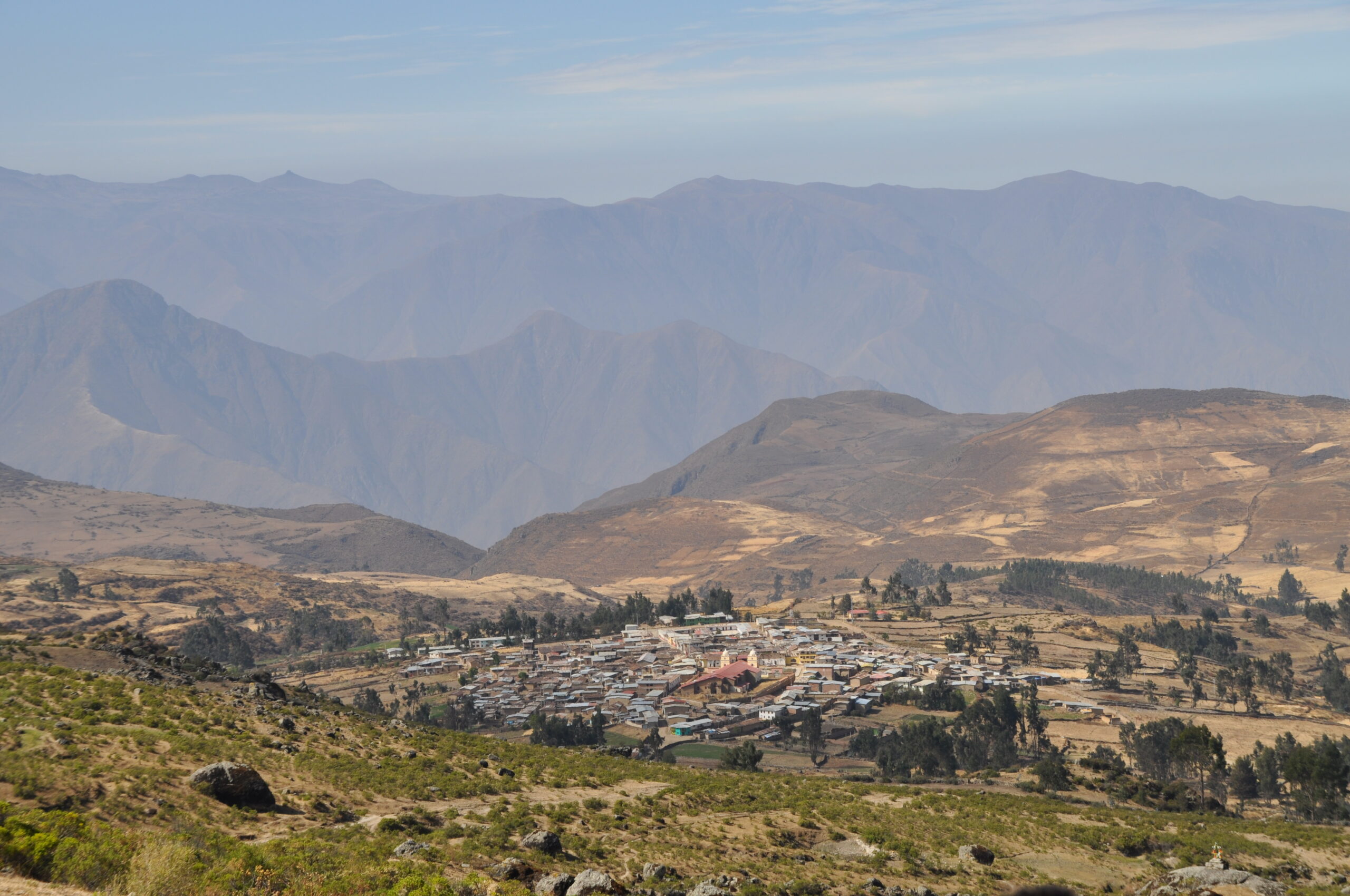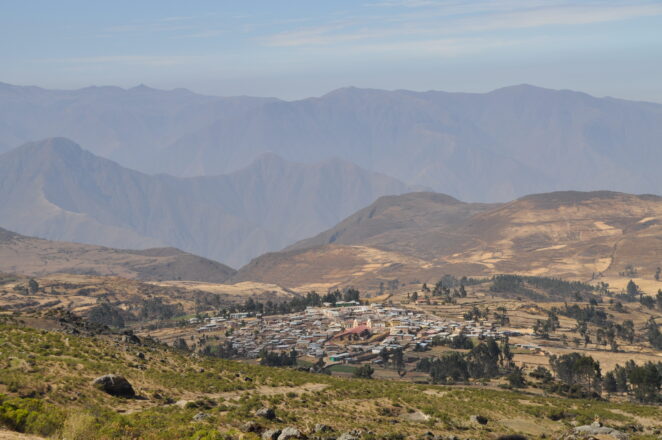Mountain EVO Case Study – Huamantanga district, Peru


View of Huamantanga
Living with change in Huamantanga, Peru- one of the research project Mountain-EVOs case studies
Although buoyant economic growth in Peru has generated positive macro-economic figures, this evolution has largely bypassed the remote communities in the Andes, where poverty pockets are widely present.
Huamantanga is an example of such a poverty pocket. It is a rural community located in the Peruvian Andes between 3100 and 4600 meters of altitude, with the town located at 3400 meters above sea level in Chillon River Catchment, which is one of the three catchments (Chillón, Rímac and Lurín) that provide water to Lima, the Capital of Perú.
Huamantanga is located in a dry area of the Andes, where there are two main seasons, dry and rainy. Annual precipitation is about 800 mm, with a very large altitudinal gradient, and the rainy season lasts from November until April. The wettest months are January, February and March. On the other hand, the dry season is from May until October and July is driest month of the year.
The main productive activities in Huamantanga are agriculture and cattle-raising for cheese production. The community confirms that these activities are limited because of the lack of water. This is the reason that, in the past, people living in the area developed practices of water infiltration enhancement in the rainy season to improve their water availability, in the springs, during the dry season. These practices are called mamanteo or amunas, and, until today, they are very poorly studied.
The Huamantanga communities are under severe pressure to implement land conservation practices, not only to improve their own livelihoods but also to safeguard ecosystem services for downstream users. The tropical Andes more generally are therefore also an important test-bed for payment for ecosystem services models.
These communities serves as one of Mountain-EVOs case studies, in which they will analyse how environmental virtual observatories (EVOs) can be used to generate knowledge and alleviate poverty.
CONDESAN is one of the project partners of the Mountain-EVO project. The organisation is committed to sustainable management of natural resources contributing to poverty alleviation in the Andes region.
Check out Google Earth flyover video on the revival of ancient water harvesting method in Huamantanga
Produced by CONDESAN with partners
(0) Comments
There is no content